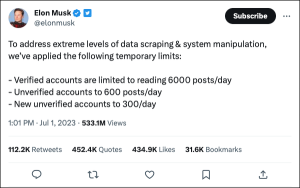Whatever we do, time is an important indicator of our efficiency. It tells us how long it took us to complete a particular activity, how much it might take us in the future, and how well it could improve the process.
Because of that, time plays one of the most critical roles in recruitment. As a hiring metric, it helps HR professionals understand how fast job applicants move through different recruiting stages and how that might affect candidate experience.
For instance, the average time-to-hire is 36 days, as per the Human Capital Report but it varies from industry to industry. Hence, the hospitality sector takes up to 46 days, as per Statista to hire, but retail takes only 25.
Even though some Talent Acquisition teams and recruiters don’t practice measuring time-to-hire, it’s beyond helpful to leverage it and use its insights to improve the strategies.
Here is what time-to-hire stands for and how it differs from time-to-fill.
What is Time-to-hire Metric?
Time-to-hire is one of the most frequent hiring metrics. It provides recruiters with insights into how many days have passed between the day a job applicant applied for an available vacancy and the day they accepted the job offer.
That period contains critical data that enables HR professionals to measure how efficient they were and whether job applicants had a smooth experience. Moreover, this metric tracks how many days it took to process, evaluate, interview, and hire the most compatible candidate.
If recruiters take a long time to move a job applicant through this phase, that raises red flags as it could indicate they were too slow and not efficient enough. But time-to-hire tells another significant recruitment story called candidate experience.
Job applicants who had to wait for more than a month for a job offer won’t be as satisfied with the process as those who got the job in two weeks. Hence, slow recruitment could affect employer branding and future talent pool.
It’s why HR professionals should never wonder whether they should measure time-to-hire. Indeed, this metric is inseparable from a well-informed hiring process and goal achievement.
The Thin Line Between Time-to-Hire and Time-to-Fill
Even the most varied business leaders and HRs often struggle with telling apart these two metrics. But although the difference might seem small, it means a world of difference.
Time-to-fill is the time distance between the day the department managers receive approval for job requisition and the day a job applicant says yes to the offer. On the other side, the time-to-hire metric tracks the days between a candidate applied for a vacancy and the one they accepted the job.
The difference is that time-to-fill measures the entire recruitment process, while time-to-hire presents the period between the day a job applicant became a part of the hiring funnel and the moment they became a part of the company.
In both cases, HR technology is essential for efficiently measuring these metrics and providing recruiters with invaluable insights.
Ultimately, the answer to whether you should include the time-to-hire metric is always yes. But it also matters how you do it and whether you know how to improve it.
3 Ways to Enhance Your Time-to-Hire Metric Measuring
-
Leverage HR technology
Even though some companies might choose a manual measuring of time-to-hire (e.g., Excel), it’s always a better idea to invest in HR technology. With the right high-tech platform, recruiters get real-time insights and can follow the process from day one.
Tech solutions also make it easier to keep data in one place and go back to a particular period when necessary. Various ATS platforms have advanced options to track time-to-hire and personalize the requirements.
However, it’s essential to identify HR technology that merges smoothly with the existing infrastructure and answers your particular recruitment needs.
-
Identify the Ideal Hiring Speed
A successful recruiting funnel requires you to decide the ideal number of days it’ll take to hire the most compatible candidate. As time-to-hire also depends on external circumstances, things could go wrong, slowing down the process.
It’s why you should also set the maximum period your team needs to move the job applicant through the recruitment funnel. Keep an eye on the difference between the perfect and least favorable period, and consider what you could do to accelerate it.
HR technology usually offers data-driven predictions concerning desired and maximum time-to-hire that you can access and manage in the platform’s dashboard. Thanks to that, you can also see which stage takes the most time.
-
Thorough Pre-selection Evaluation
The speed of recruitment depends on various factors recruiters might not be able to control (e.g., a candidate’s decisiveness), but in the end, they have an undeniable influence on the process. For instance, if HR professionals don’t spend enough time identifying the ideal job applicant, they could attract many underqualified individuals.
In that case, time-to-hire could slow down due to a shortlisted candidate not feeling comfortable with the company culture, for example. Because of that, recruiters should dedicate enough attention to the pre-selection phase as it could help them attract more qualified talents.
Otherwise, they could spend too much time processing and interviewing job applicants they will eliminate during evaluation. Recruiters should aim to spend as little time as possible on admin activities, allowing them to candidates who come close to the vision of the ideal employee.
—
Although external factors often influence the speed of recruitment, HR professionals should always include the time-to-hire metric. Thanks to that, they’ll get insights into what slows down the process and improves the recruitment funnel.
Nowadays, HR technology helps recruiters turn time-to-hire metrics into a smooth task that provides critical insights and tips on accelerating the process.
Business & Finance Articles on Business 2 Community
(10)






